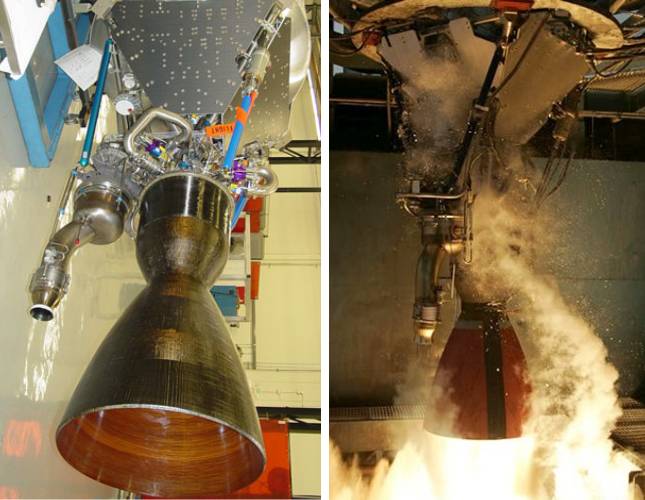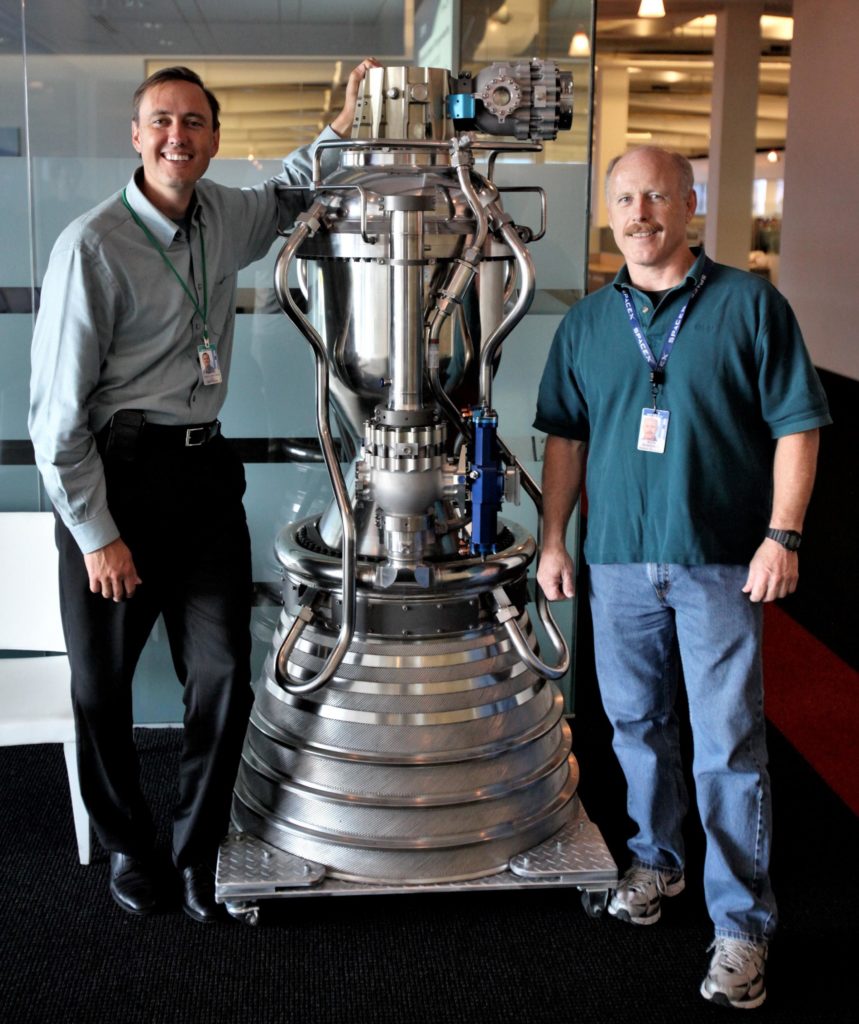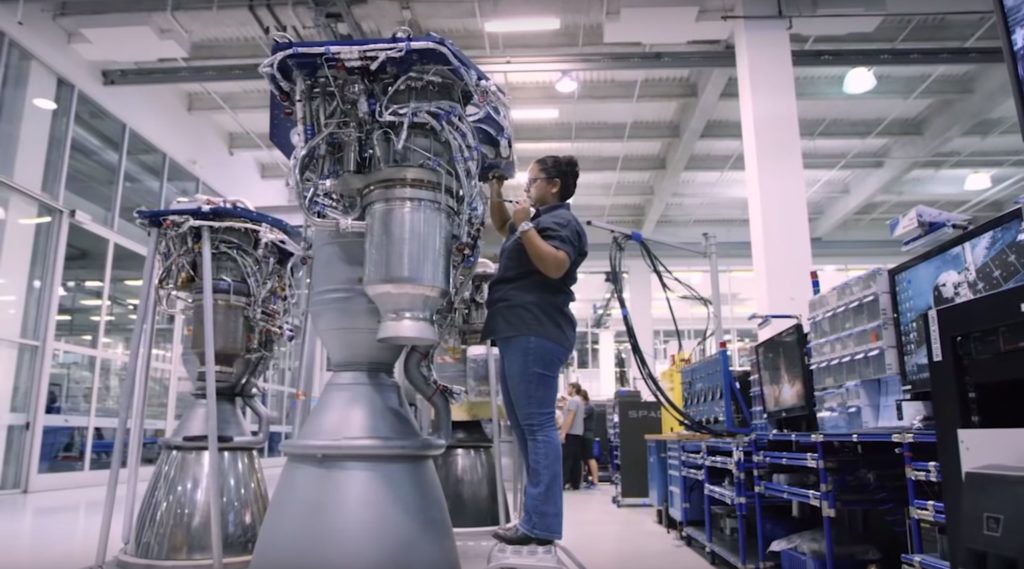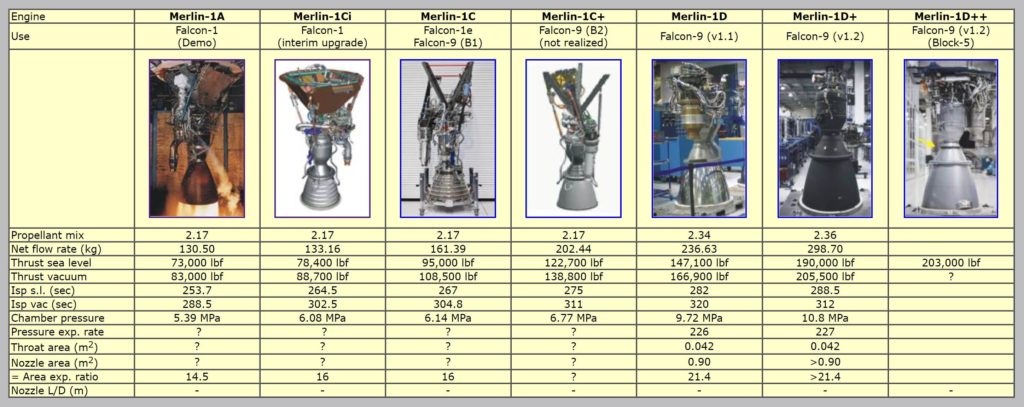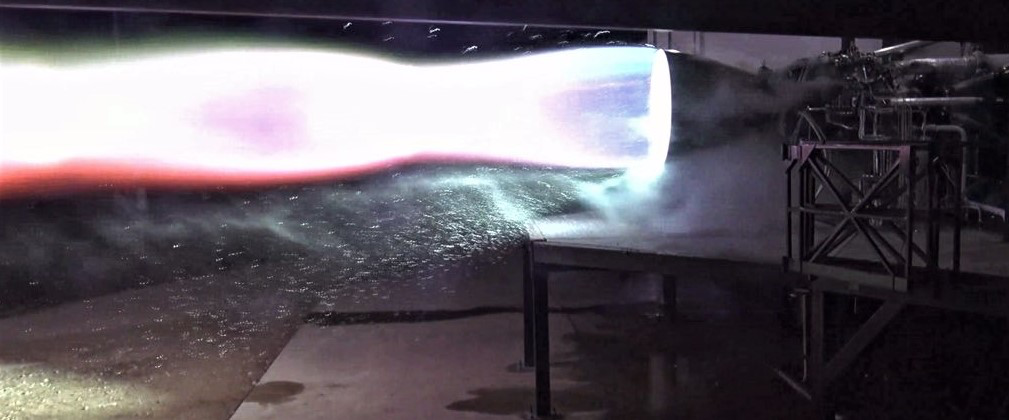
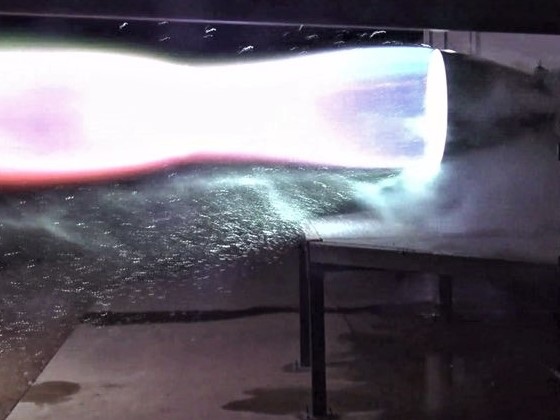
News
SpaceX’s first redesigned Raptor static fire paves the way for Starship’s hop test debut
After years of development, multiple prototypes constructed, and more than 1200 seconds of cumulative static fire testing at durations longer than what is needed to land on Mars, SpaceX propulsion engineers and technicians have successfully built and static-fired the first flight-worthy Raptor for the first time ever.
This is an incredibly important step towards BFR (Starship/Super Heavy) launch operations and is even more directly encouraging for the first integrated hop tests of SpaceX’s Starship prototype (unofficially deemed Starhopper), which could very well be the next host of the pathfinder Raptor engine pictured below.
— Elon Musk (@elonmusk) February 4, 2019
In the scope of SpaceX’s history designing, building, and optimizing large-scale rocket engines, Raptor’s development likely followed a similar path. While Merlin 1 operates on a dramatically simpler combustion cycle (gas-generator), uses different fuel (kerolox vs. methalox), and is significantly less powerful and efficient than Raptor (as proposed), the workhorse engine went through a range of dramatically different iterations (Merlin 1A, 1B, 1C, and 1D) and is scarcely recognizable when its earliest block is compared to its most recent version. Merlin 1A began as an ablatively cooled 340 kN (76,000 lbf) engine, while the current workhorse (generally known as Merlin 1D Full Thrust, M1D FT) features a regeneratively-cooled nozzle and produces more than 840 kN (190,000 lbf), nearly a threefold improvement in thrust.
- Merlin 1A. (SpaceX)
- Merlin 1C – SpaceX considered but never actually built Merlin 1B. (Steve Jurvetson)
- Fresh Block 5 Merlin 1D engines are built and assembled in Hawthorne, CA before heading to Texas for testing. (SpaceX)
- An exceptional chart showing the extensive changes SpaceX’s Merlin family has undergone in more than a decade of development and operation. (www.B14643.de)
Raptor’s subscale prototype – featuring twice the chamber pressure of M1D (200 bar, ~3000 psi) and around the same maximum thrust as Merlin 1D (~1000 kN, 225,000 lbf) – can effectively be examined as the Merlin 1A to the Merlin 1C or 1D-class Raptor that SpaceX’s propulsion team settled on after learning from its smaller predecessors.
Performed on a Raptor-specific test cell at SpaceX’s McGregor, Texas “Rocket Ranch”, this milestone static fire was enabled by what one can safely assume were dozens or hundreds of lessons-learned over the course of two years of prototype engine testing and iterative improvement, working up to a quasi-final design that was shipped to Texas and installed just a few days ago. To kick off the first critical static fire of the pathfinder Raptor hardware, reports from ground observers indicate that SpaceX engineers began with a series of extremely short ‘blip’ tests that appeared perhaps 2-3 seconds from ignition to shutdown.
— Elon Musk (@elonmusk) February 4, 2019
Starhopper’s one-stop hop spot
The immensely encouraging news of Raptor Block 1’s first successful static fire comes as SpaceX engineers, technicians, and contractors work around the clock to build both the first full-scale Starship prototype (nicknamed Starhopper) and the spartan pad it will lift off from during hop tests. SpaceX’s Boca Chica facilities were marked by a burst of pad-related activity over the last week or two, including the early installation of a range of pipes (some of it insulated for supercool cryogenic methane and oxygen) and the creation of a berm pointing towards the probable location of Starhopper’s simple launch mount and pad. ‘
While the Starship prototype’s three Raptor engines will dramatically outclass Falcon 9’s Grasshopper and F9R development vehicles (also used for hop tests), it’s possible that the same setup – basically a flat (refractory?) concrete pad with GSE (ground support equipment) protected behind a berm and automated water jet turrets around the vicinity – could work for Starhopper, too. For now, the successful static fire of the first post-development Raptor engine marks a massive step towards those initial hop tests and towards the first orbital launches of Starship and Super Heavy a bit further down the road. Stay tuned as SpaceX continues to extensively test Raptor and build out its Boca Chica pad and Starship prototype.
1-31-19 #SpaceX pic.twitter.com/VUgbxApjEc
— Austin Barnard🚀 (@austinbarnard45) February 1, 2019
Check out Teslarati’s newsletters for prompt updates, on-the-ground perspectives, and unique glimpses of SpaceX’s rocket launch and recovery processes!

News
Tesla FSD fleet is nearing 7 billion total miles, including 2.5 billion city miles
As can be seen on Tesla’s official FSD webpage, vehicles equipped with the system have now navigated over 6.99 billion miles.

Tesla’s Full Self-Driving (Supervised) fleet is closing in on almost 7 billion total miles driven, as per data posted by the company on its official FSD webpage.
These figures hint at the massive scale of data fueling Tesla’s rapid FSD improvements, which have been quite notable as of late.
FSD mileage milestones
As can be seen on Tesla’s official FSD webpage, vehicles equipped with the system have now navigated over 6.99 billion miles. Tesla owner and avid FSD tester Whole Mars Catalog also shared a screenshot indicating that from the nearly 7 billion miles traveled by the FSD fleet, more than 2.5 billion miles were driven inside cities.
City miles are particularly valuable for complex urban scenarios like unprotected turns, pedestrian interactions, and traffic lights. This is also the difference-maker for FSD, as only complex solutions, such as Waymo’s self-driving taxis, operate similarly on inner-city streets. And even then, incidents such as the San Francisco blackouts have proven challenging for sensor-rich vehicles like Waymos.
Tesla’s data edge
Tesla has a number of advantages in the autonomous vehicle sector, one of which is the size of its fleet and the number of vehicles training FSD on real-world roads. Tesla’s nearly 7 billion FSD miles then allow the company to roll out updates that make its vehicles behave like they are being driven by experienced drivers, even if they are operating on their own.
So notable are Tesla’s improvements to FSD that NVIDIA Director of Robotics Jim Fan, after experiencing FSD v14, noted that the system is the first AI that passes what he described as a “Physical Turing Test.”
“Despite knowing exactly how robot learning works, I still find it magical watching the steering wheel turn by itself. First it feels surreal, next it becomes routine. Then, like the smartphone, taking it away actively hurts. This is how humanity gets rewired and glued to god-like technologies,” Fan wrote in a post on X.
News
Tesla starts showing how FSD will change lives in Europe
Local officials tested the system on narrow country roads and were impressed by FSD’s smooth, human-like driving, with some calling the service a game-changer for everyday life in areas that are far from urban centers.

Tesla has launched Europe’s first public shuttle service using Full Self-Driving (Supervised) in the rural Eifelkreis Bitburg-Prüm region of Germany, demonstrating how the technology can restore independence and mobility for people who struggle with limited transport options.
Local officials tested the system on narrow country roads and were impressed by FSD’s smooth, human-like driving, with some calling the service a game-changer for everyday life in areas that are far from urban centers.
Officials see real impact on rural residents
Arzfeld Mayor Johannes Kuhl and District Administrator Andreas Kruppert personally tested the Tesla shuttle service. This allowed them to see just how well FSD navigated winding lanes and rural roads confidently. Kruppert said, “Autonomous driving sounds like science fiction to many, but we simply see here that it works totally well in rural regions too.” Kuhl, for his part, also noted that FSD “feels like a very experienced driver.”
The pilot complements the area’s “Citizen Bus” program, which provides on-demand rides for elderly residents who can no longer drive themselves. Tesla Europe shared a video of a demonstration of the service, highlighting how FSD gives people their freedom back, even in places where public transport is not as prevalent.
What the Ministry for Economic Affairs and Transport says
Rhineland-Palatinate’s Minister Daniela Schmitt supported the project, praising the collaboration that made this “first of its kind in Europe” possible. As per the ministry, the rural rollout for the service shows FSD’s potential beyond major cities, and it delivers tangible benefits like grocery runs, doctor visits, and social connections for isolated residents.
“Reliable and flexible mobility is especially vital in rural areas. With the launch of a shuttle service using self-driving vehicles (FSD supervised) by Tesla in the Eifelkreis Bitburg-Prüm, an innovative pilot project is now getting underway that complements local community bus services. It is the first project of its kind in Europe.
“The result is a real gain for rural mobility: greater accessibility, more flexibility and tangible benefits for everyday life. A strong signal for innovation, cooperation and future-oriented mobility beyond urban centers,” the ministry wrote in a LinkedIn post.
News
Tesla China quietly posts Robotaxi-related job listing
Tesla China is currently seeking a Low Voltage Electrical Engineer to work on circuit board design for the company’s autonomous vehicles.

Tesla has posted a new job listing in Shanghai explicitly tied to its Robotaxi program, fueling speculation that the company is preparing to launch its dedicated autonomous ride-hailing service in China.
As noted in the listing, Tesla China is currently seeking a Low Voltage Electrical Engineer to work on circuit board design for the company’s autonomous vehicles.
Robotaxi-specific role
The listing, which was shared on social media platform X by industry watcher @tslaming, suggested that Tesla China is looking to fill the role urgently. The job listing itself specifically mentions that the person hired for the role will be working on the Low Voltage Hardware team, which would design the circuit boards that would serve as the nervous system of the Robotaxi.
Key tasks for the role, as indicated in the job listing, include collaboration with PCB layout, firmware, mechanical, program management, and validation teams, among other responsibilities. The role is based in Shanghai.
China Robotaxi launch
China represents a massive potential market for robotaxis, with its dense urban centers and supportive policies in select cities. Tesla has limited permission to roll out FSD in the country, though despite this, its vehicles have been hailed as among the best in the market when it comes to autonomous features. So far, at least, it appears that China supports Tesla’s FSD and Robotaxi rollout.
This was hinted at in November, when Tesla brought the Cybercab to the 8th China International Import Expo (CIIE) in Shanghai, marking the first time that the autonomous two-seater was brought to the Asia-Pacific region. The vehicle, despite not having a release date in China, received a significant amount of interest among the event’s attendees.
